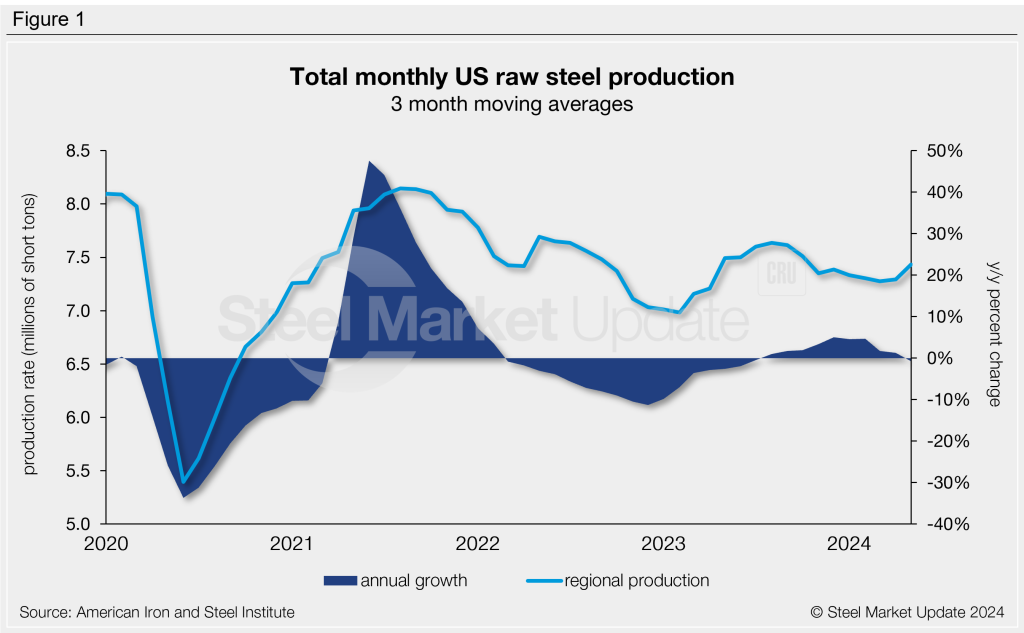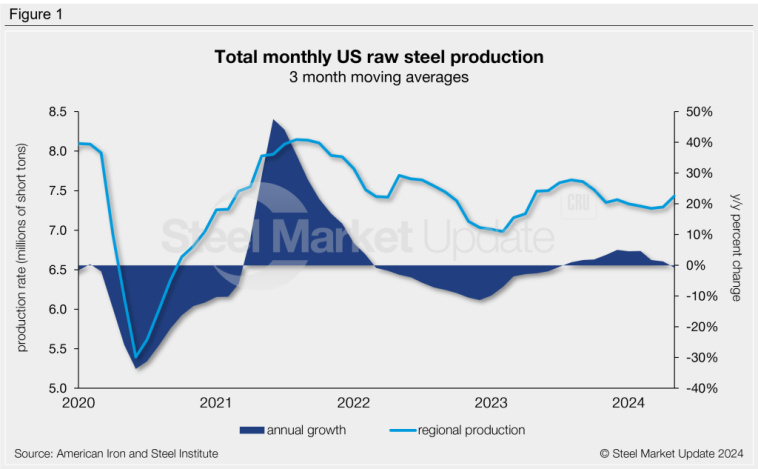
Economic Shifts and Small Business Survival in Today’s Market
The modern economic landscape is evolving quickly, and small businesses are being pushed to adapt to a host of new challenges and opportunities. Amid uncertain market trends and shifting consumer behaviors, entrepreneurs are finding themselves having to figure a path through winding regulatory requirements, tricky parts of strategic planning, and changing digital marketing trends. This opinion piece takes a closer look at the current economic situation and provides an in-depth analysis on how small businesses, industrial manufacturers, automotive players, electric vehicle innovators, and marketing professionals are responding to these demands.
In many ways, today’s market is characterized by rapid innovation and sudden change. Although the situation might seem overwhelming or off-putting at times, business leaders must now strive to manage their way forward using creative solutions and strategic planning. In the sections that follow, we will break down the tangled issues affecting multiple industries, discuss how leaders can get around tricky parts, and offer insights into the interplay between regulatory challenges and market evolution.
Small Business Adjustments Amid Economic Turbulence
Small businesses often act as the backbone of the economy. Yet, they are faced with many challenges that range from shifting consumer tastes to unpredictable regulatory standards. While these challenges may appear intimidating, many entrepreneurs are beginning to identify essential strategies that not only keep them in business but also drive growth.
Adapting to a Rapidly Changing Consumer Landscape
Today’s consumers expect high levels of personalization in their products and services. Rather than relying on old business models, small business owners are having to steer through unexpected demands by revisiting their marketing strategies and product development lifecycles. To get around the tangled issues in consumer outreach, many are turning to digital marketing channels and influencer partnerships that can bridge the gap between traditional business approaches and modern technological capabilities.
- Investing in social media platforms to reach a wider audience
- Using data analytics to understand consumer preferences
- Exploring e-commerce solutions to complement brick-and-mortar operations
- Adapting campaigns for mobile-first consumers
These adaptations, however, require owners and managers to manage your way through a maze of new technologies and shifting expectations. Although balancing old business practices with innovative strategies might feel nerve-racking, it is a necessary evolution for staying relevant.
Overcoming Regulatory and Tax-Related Challenges
Business tax laws have been subject to many twists and turns in recent years. Policy changes, government incentives, and evolving tax codes have all contributed to a scenario that is full of problems and on edge for many entrepreneurs. Rather than shying away from these challenges, a growing number of small business owners are taking a proactive approach.
By digging into the key details of tax reforms and seeking professional advice, entrepreneurs can figure a path through the complicated pieces of tax regulations. Some strategies that have proven successful include:
- Consulting with tax professionals for tailored advice
- Staying updated on local and federal tax law amendments
- Utilizing accounting software that automates tedious calculations
- Participating in business tax seminars and webinars
The efforts to demystify and efficiently manage these requirements are absolutely critical for ensuring that businesses remain competitive and can prioritize growth over red tape.
Industrial Manufacturing: Embracing Automation and Global Standards
In the industrial manufacturing sector, traditional production methods are being reimagined and modernized in the face of automation and global competition. The industry is experiencing a substantial shift as manufacturers seek to streamline operations, reduce costs, and ultimately produce more efficient products.
Embracing Automation to Address Production Challenges
The integration of automation technology into the manufacturing process is one of the super important trends shaping the sector today. By implementing automated machinery and robotics, manufacturers can get around many of the tangled issues that come with labor-intensive operations. This allows companies to not only reduce human errors but also to scale production without compromising quality.
Key benefits of automation include:
- Enhanced production speed and efficiency
- Reduced operational costs
- Minimization of injury risks associated with heavy manual labor
- Improved product consistency and reliability
While investing in automation can be intimidating due to the initial financial outlay and the fine points involved in system integration, many manufacturers find that long-term savings and competitive advantage are well worth the temporary difficulties.
Global Competition and the Need for Lean Manufacturing
As markets worldwide become more interconnected, domestic manufacturers are also facing increased international competition. The modern industrial landscape demands efficiency and rapid turnaround times, leading many firms to adopt lean manufacturing principles. These principles emphasize waste reduction, continuous improvement, and rapid response times.
Lean manufacturing strategies help companies figure a path through the confusing bits of production delays and excessive overheads. Some critical approaches include:
- Streamlining supply chains to eliminate unnecessary costs
- Integrating quality control at every step of production
- Implementing just-in-time production to reduce inventory levels
- Training the workforce on efficient production practices
By getting into these streamlined approaches, companies can position themselves strongly in the global market without sacrificing quality or incurring unnecessary expenses.
Automotive Industry Dynamics in an Evolving Market
The automotive industry has always been a bellwether for economic trends—and now, with the rise of electric vehicles (EVs), the sector is facing an even more dramatic transformation. Traditional automakers and new entrants alike must figure a path through a marketplace that is rapidly embracing sustainable energy and eco-friendly vehicle designs.
Electric Vehicle Innovations and Market Opportunities
The shift toward electric vehicles represents a significant technological and environmental breakthrough. Automakers are investing heavily in EV technology, and government incentives are pushing both producers and consumers toward cleaner transportation options. However, this transition is not without its nerve-racking bits and tricky parts, ranging from supply chain issues to the challenge of building sufficient charging infrastructure.
For those interested in the EV market, several long-tail topics within the industry are gaining attention, including:
- Advancements in battery technology and energy storage
- Integration of smart charging solutions in urban infrastructure
- Development of cost-effective EV production methods
- Consumer trends favoring sustainability and reduced fossil fuel dependence
These evolving market trends not only present opportunities for growth but also have profound implications for environmental policy and energy regulation. With each new innovation, the automotive sector is forced to step up and efficiently manage its production and logistics, all while facing the tangled issues of resource allocation and energy distribution.
Traditional Automotive Manufacturing vs. Emerging EV Trends
One of the most interesting debates in the automotive sector is the balance between traditional vehicle manufacturing and the emerging electric vehicle segment. While legacy automakers undoubtedly have a wealth of experience, they must now adjust their production processes and invest in EW technology to remain competitive. In many cases, this requires rethinking entire product lines and experimenting with innovative business models.
Comparison of traditional vs. EV-focused manufacturing strategies can be summarized as follows:
| Aspect | Traditional Automotive Manufacturing | Electric Vehicle Manufacturing |
|---|---|---|
| Technology | Internal combustion engines, mechanical parts | Battery systems, electric drivetrains |
| Investment | Stable historical investments, moderate R&D | High initial R&D costs, rapidly evolving technology |
| Market Trends | Long-established, but declining in some markets | High growth potential, supportive regulatory frameworks |
| Regulatory Pressures | Emission standards, fuel economy regulations | Government incentives, zero-emission mandates |
This table illustrates the subtle details between these sectors. As companies dig into the fine points of production adjustments, both sides are discovering that working through the change may require hybrid strategies that combine legacy practices with cutting-edge technologies.
Marketing Strategies that Balance Tradition and Digital Innovations
Marketing has always been an area where businesses must continuously figure a path through the ever-shifting medium of consumer outreach. In today’s digital rush, traditional marketing channels coexist with online and social media campaigns, creating a multifaceted approach to reaching potential customers. The challenge for many companies is to align these approaches in ways that minimize the nerve-racking bits typical of drastic changes while maximizing their outreach and engagement.
Bridging Offline Traditions with Digital Adaptations
Many small businesses continue to rely on long-standing marketing methods such as print advertising, local networking, and community events. However, the current momentum requires a significant investment in online marketing and digital presence. Firms are increasingly leveraging digital channels to extend their reach, fully aware that modern consumers are more likely to engage online.
Certain digital strategies have proven effective in offering a balanced blend of offline tradition and modern digital appeal:
- Social Media Outreach: Using platforms like Facebook, Instagram, and LinkedIn to reach diverse audiences
- Content Marketing: Creating insightful articles and blogs that keep customers engaged
- Email Campaigns: Personalizing messages to maintain strong customer relationships
- SEO Tactics: Optimizing online content for search engines to drive organic traffic
These strategies require business owners to get into the little details of both creative development and technical optimization. When integrated correctly, the dual approach of offline and online methods can ensure broad market coverage without overwhelming resources.
Brand Storytelling and Consumer Engagement in the Digital Age
For many consumers, a company’s story is more powerful than just its products or services. Brand storytelling is a technique that effectively communicates a business’s mission, values, and origin story. In an era where consumer trust is paramount, narrating these stories in an authentic and engaging manner has become super important.
Elements of successful brand storytelling include:
- Authenticity: Sharing genuine success stories and lessons learned
- Visual Engagement: Using high-quality videos, images, and infographics
- Interactive Content: Creating quizzes, polls, or interactive media to involve customers
- Social Proof: Incorporating customer testimonials and case studies
By focusing on the fine shades of consumer engagement and distinguishing subtle differences in audience demographics, marketers can develop campaigns that resonate more effectively. This approach not only reinforces customer loyalty but also broadens the company’s reach in an increasingly crowded online environment.
Understanding Business Tax Laws: Finding Your Way Through Fiscal Hurdles
One of the most challenging aspects of running a business in today’s market is managing the ever-changing landscape of business tax laws. These regulations, which are often tangled with tricky parts and complicated pieces of interpretation, have significant impacts on operational costs and profitability. While some changes are clearly in favor of business growth, others introduce significant tensions and even nerve-racking uncertainties.
Staying Informed Amid Constant Tax Reforms
With governments around the world frequently adjusting tax codes, businesses need to make a concerted effort to stay updated on the latest reforms. Here are some ways in which organizations can ensure they are on top of these changes:
- Regularly consulting with tax advisors who specialize in your industry
- Attending industry-specific tax seminars and webinars
- Subscribing to reputable economic and business news outlets for the latest updates
- Integrating advanced accounting software that automatically adjusts for tax updates
Implementing these steps may initially feel intimidating, but with proper guidance and preparation, managing your way through the maze of fiscal regulations becomes more manageable. Rather than getting bogged down by off-putting administrative tasks, businesses can use these tools to refocus efforts on growth and innovation.
Leveraging Tax Incentives and Credits for Business Growth
In various regions, governments offer tax credits and incentives designed specifically to spur growth in key sectors. For instance, technology upgrades, eco-friendly production methods, and research and development initiatives are often rewarded with specific fiscal advantages. Business owners who take the time to poke around these opportunities can harness additional funding streams and reduce their overall tax burden.
Some initiatives that are often supported by tax incentives include:
- Investments in renewable energy and sustainable infrastructure
- Upgrading to energy-efficient machinery
- Funding research and development projects to drive innovation
- Investments in employee training and skill development
These financial benefits, while sometimes hidden behind layers of twisted regulations, offer a compelling reason for companies to embrace change. Understanding these key measures—and their subtle details—can lead to long-term savings and a more robust operational foundation.
Electric Vehicles and Environmental Economics: Charting a Greener Future
The electric vehicle sector is more than just a technological breakthrough—it represents a broader shift in environmental economics and the global push for sustainability. As concerns about pollution and climate change continue to mount, businesses across various sectors are being called upon to adopt greener practices and technologies.
Boosting Sustainability Through EV Adoption
The move towards electric vehicles has several advantages when viewed through the lens of environmental economics. By reducing reliance on fossil fuels, nations can lower their carbon footprints and pave the way for a more sustainable future. In addition, the corresponding boost in green technology often pushes industrial manufacturing and research into new, uncharted territories.
Important areas to look at in the context of EV adoption include:
- Advancements in battery recycling and waste management
- Development of integrated, smart charging solutions
- Collaborative public-private partnerships for infrastructure development
- Increased government funding for renewable energy initiatives
These measures not only promote a cleaner environment but also open up innovative revenue streams for businesses involved in the supply chain. Although the challenges of setting up widespread charging infrastructures and ensuring grid stability are intimidating at times, persistence in these initiatives is essential for long-term progress.
How Environmental Regulations Impact Business Strategies
Modern environmental regulations have added another layer of intricate fiscal planning for many companies. With policies that favor green practices, firms in industries ranging from manufacturing to automotive are compelled to invest in cleaner technology and smarter production methods. This policy shift has generated an urgency among business leaders to weigh the fine points of compliance against potential competitive advantages.
Key considerations include:
- Analyzing the cost-benefit ratios of switching to greener production methods
- Understanding federal and state-level environmental subsidies
- Assessing the long-term savings associated with sustainable investments
- Determining the balance between up-front costs and long-term fiscal benefits
In many cases, companies that take a proactive stance and get into the small distinctions of environmental policy work find that the benefits far outweigh the initial outlay. Even when these shifts seem nerve-racking, the push for sustainability is not only a moral imperative but a sound economic decision.
Industrial Manufacturing and the Future of Smart Factories
As industrial manufacturers continue to adopt automation and integrate digital technology, the concept of the smart factory is quickly becoming a reality. Smart factories leverage data and internet-of-things (IoT) innovations to improve efficiency, reduce operational downtime, and ensure robust quality control throughout every step of the production process.
Integrating IoT in Production Processes
Smart manufacturing hinges on the effective use of IoT, enabling real-time monitoring and rapid response to production issues. With the ability to get around traditional bottlenecks and gain insights into the fine details of production lines, manufacturers can make informed decisions that lead to enhanced productivity. Some of the key benefits include:
- Real-time data monitoring and predictive maintenance
- Streamlining supply chain logistics through connected devices
- Improved accuracy and speed in quality assurance processes
- Reduced waste and better resource management
This strategy helps companies figure a path through the technical twists and turns that are characteristic of modern production, merging digital innovations with timeless manufacturing expertise.
Benefits and Challenges of Establishing Smart Factories
The transition to smart factories comes with its share of challenges. While the benefits may seem super important, companies are often hesitant to invest due to high initial costs and the nerve-racking task of overhauling existing systems. Key areas that require careful consideration include:
- System integration and data security concerns
- Training staff on new technologies and digital protocols
- Ensuring compatibility between legacy systems and modern digital tools
- Managing the costs of upgrading hardware and software infrastructure
Despite these challenges, the move toward smart factories is increasingly viewed as necessary for sustained competitive advantage. By sorting out the hidden complexities and investing in robust digital systems, manufacturers are setting themselves up for enhanced global competitiveness and operational agility.
Conclusion: Crafting Strategies for a Dynamic Future
The diverse challenges and opportunities across small business, industrial manufacturing, the automotive sector, and environmental economics illustrate a common truth: businesses must continuously adapt in order to thrive. From revising marketing strategies and rethinking production processes to re-strategizing in light of evolving tax laws and sustainability requirements, leaders must be prepared to find their way through the tangled issues of modern operations.
To succeed in such a dynamic environment, companies need to:
- Invest in technology and automation to improve efficiency
- Stay informed about regulatory changes and tax reforms
- Embrace innovative marketing practices that blend traditional and digital channels
- Prioritize sustainable practices and smart manufacturing techniques
By taking a closer look at these areas and adopting strategies that address the subtle details of today’s challenges, business leaders can set themselves apart from competitors. Whether it’s cultivating a strong digital presence, adopting lean production methods, or leveraging government incentives for green initiatives, the key to long-term success lies in a balanced, informed approach to change.
As we move forward, the willingness to adjust, learn new skills, and invest in emerging trends will be the decisive factor that distinguishes successful companies from those that fall behind. While the journey may be replete with intimidating decisions and nerve-racking transitions, the proactive adoption of these strategies will pave the way for sustained growth and innovation.
Ultimately, the current economic climate demands that business leaders remain agile and resourceful in facing a landscape marked by tangled issues and confusing bits. By actively finding ways to manage your way through these changes, companies can not only improve their current standing but also lay the groundwork for a more dynamic and prosperous future.
In conclusion, the modern marketplace rewards those who are willing to get into the fine points of strategic planning, implement agile digital marketing techniques, and leverage the potential of automation and innovation. Regardless of your industry, understanding the subtle distinctions between traditional practices and emerging trends is more than just beneficial—it is super important for long-term success. Business leaders who can stitch together these diverse elements will be best positioned to steer through economic uncertainties and capitalize on new opportunities in the years to come.
Originally Post From https://www.steelorbis.com/steel-news/latest-news/us-raw-steel-production-is-up-10-percent-week-33-2025-1404832.htm
Read more about this topic at
Get started with Help me write in Chrome
Missing reference information – APA Style


